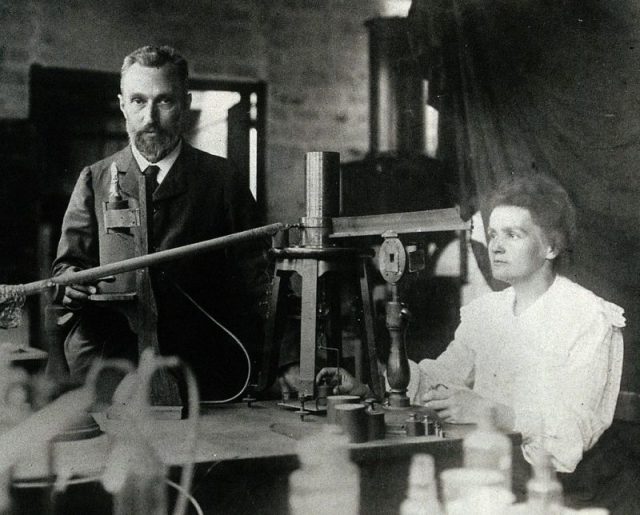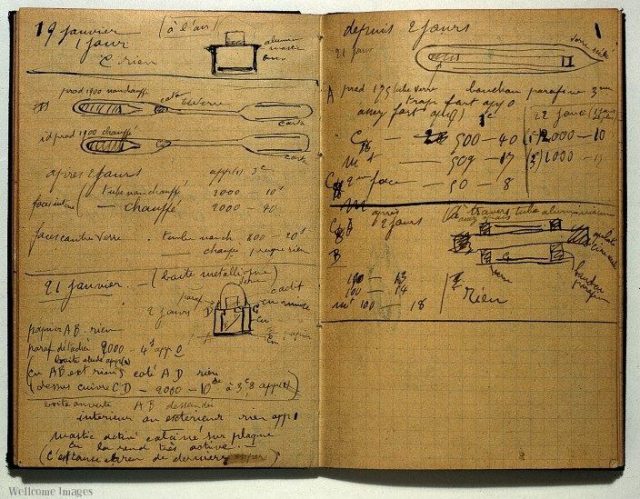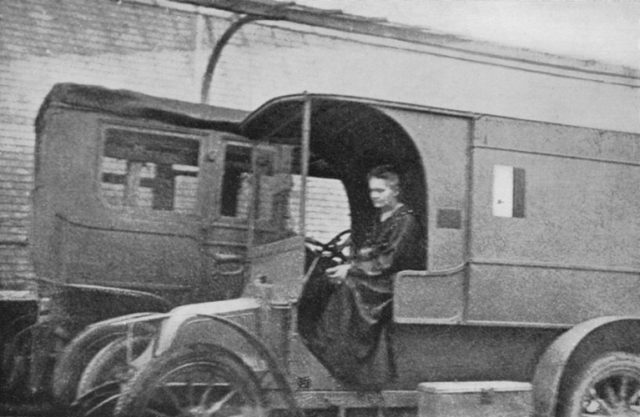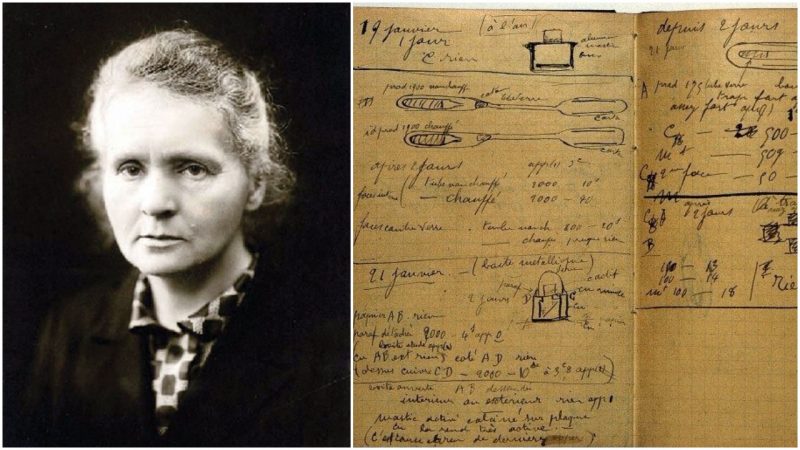Completed in 1790, the French Pantheon is a giant neoclassical mausoleum situated in the Parisian Latin Quarter. It houses the remains of a number of renowned French citizens, including Voltaire, Jean-Jacques Rousseau, Victor Hugo, and Louis Braille. Alongside many men currently interred in the Pantheon are several women, and one of them is Marie Curie, the Polish-French scientist whose pioneering research earned her the 1903 Nobel Prize in physics, which she shared with her husband, Pierre Curie, and the 1911 Nobel Prize in chemistry.
The majority of her research focused on radioactivity: Among other achievements, she coined and defined the term “radioactivity” and discovered two important radioactive elements; radium and polonium, which she named after her home country of Poland. Unfortunately, since the negative effects of radiation on human health were unknown at the time, Curie never protected herself from them during her experiments. Ultimately, her own discovery most likely led to her demise: in 1934, she died of aplastic anemia, a condition that was caused by prolonged exposure to radium and polonium. Even her daughter Irene Joliot-Curie, who also received a Nobel Prize in chemistry, died of leukemia, which was likely a direct result of her mother’s constant exposure to high levels of radiation.

She was buried at the Sceaux Cemetery in southern Paris, alongside her husband who died almost 28 years earlier. However, in 1995, their remains were transferred to the Pantheon to join the remains of other icons of French history. In fact, their remains are quite unique: When they were disinterred from their original resting place, they were so radioactive that they were interred in the Pantheon in inch-thick lead coffins that prevent the radiation from harming those who come to honor them. Actually, since the unfortunate Curies were contaminated with radium 226, the most stable isotope of radium that has a half-life of approximately 1,500 years, their remains will stay dangerously radioactive for at least that long.
Furthermore, since Marie Curie never thought that her experiments were harmful, she contaminated her entire household along with many of her personal items. She frequently carried samples of radium and polonium in the pockets of her lab coat and brought them home to analyze in her spare time. She unwittingly contaminated her all of her clothes, her books, notebooks and cookbooks, her jewelry, furniture around her home, and various other personal items.

Nowadays, more than 80 years after her death, many of her personal artifacts are stored in Paris, at the Bibliothèque Nationale de France, the National Library of France. The items are kept in special boxes that are reinforced with lead to prevent the radiation from harming their handlers. Just like Curie’s body, they will remain highly radioactive for at least 1,500 years.
Still, Curie’s radioactive items are accessible to the public. Anyone who wishes to study the original notebooks that contain the handwritten details on her groundbreaking research is required to sign a liability waiver and wear all kinds of protective gear while browsing the dangerous documents.

In the years after the Curies revealed radioactivity to the public, it was thought that radioactivity was actually beneficial for human health. Also, the strange fluorescent luminosity was an appealing novelty for many people across the world. In the first two decades of the 20th century, during the era of the so-called “Radium Craze,” many household items, including clocks and kitchen utensils, contained radium simply because it was known to glow in the dark. Furthermore, a number of supposedly reinvigorating tonics containing radium entered the market and were regularly consumed.
The idea of radioactive elements as beneficial for human health was shattered in 1938 when radioactive consumer products were banned in the U.S. by an act issued by the Food and Drug Administration. By that time, it was known that radioactive elements can be used as a powerful and efficient energy source, but also that their effects on health can be devastating.
